Although England isn’t a large country compared to the United States or Canada, you might be surprised to learn that there are 10 national parks within its borders (out of 15 in the whole of the UK). In this guide, you’ll learn all you need to know about visiting the national parks in England.
These English national parks cover a wide range of landscapes and habitats from moorland and heath, to coastal areas, lakes, rivers, and forests. Each offers a different opportunity to discover quaint English villages that haven’t changed much in centuries, interesting wildlife, and plenty of fun activities.
I’ve visited most of the famous parks in England (8 of the 10 to be exact) and I’ve been to many of these multiple times over the years – I think I must have visited Dartmoor over 20 times! These fantastic wilderness parks are perfect for hiking, biking, camping, and a whole host of other outdoor activities.
National Parks in England
Below, you’ll find information on all of the national parks in England from what to expect, how to visit, and things to do inside the parks themselves. This is based on my own personal experience as well as up-to-date research and reviews from other travelers (as of 2023).
1. Peak District National Park
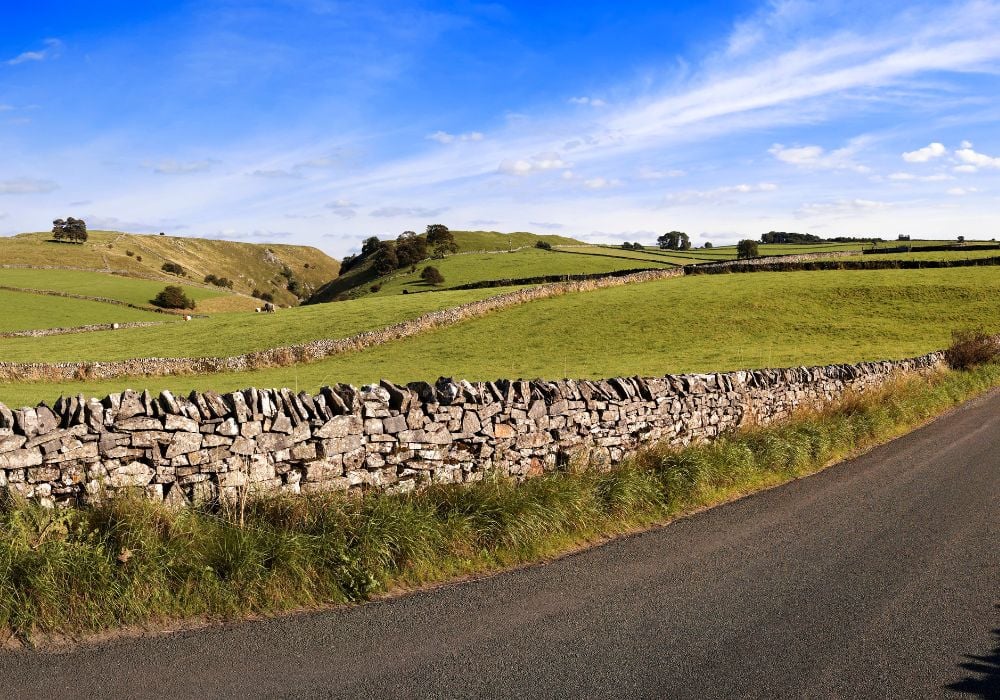
The Peak District National Park covers an area of 555 square miles (1,438 square kilometers) in Central England. It forms part of the Pennine Hills, affectionately known as the backbone of England. The landscape includes limestone dales and dramatic moorland, rolling hills, and forest.
Inside the park, you’ll find over 200 miles of hiking trails and a huge network of underground caves. The Peak District is home to the highest natural cave in the country, Titan Cave, which was only discovered by potholes just over 20 years ago. The highest point in the park is Kinder Scout which stands at 2,087 feet (636 meters).
There’s a wide range of activities on offer inside the park from trail walking, cycling, and horse riding to camping, rock climbing, and caving. Watersports are available on the many lakes inside the park, and thrill-seekers can even have a go at paragliding.
Hardcore hikers can attempt one of the many long-distance trails such as the Pennine Way, the Peak District Boundary Walk, and the Peak Way. There are also plenty of shorter routes to choose from that are perfect for day hikes and easy strolls throughout the park.
Location: The Peak District is located in Central England about halfway between Sheffield and Manchester. Click here for directions.
Getting There: Renting a car is the best way to see the Peak District as public transport is somewhat limited inside England’s national parks. Taking a tour, like this one from Manchester, is another great way to see the highlights. Click here for more info.
Things To Do: Walking, climbing, and caving.
Where to Stay: There are a few accommodation options inside the national park. The Barrell Inn offers deluxe rooms in a gorgeous rural setting close to the village of Eyam. Click here to find out more.
2. North York Moors National Park
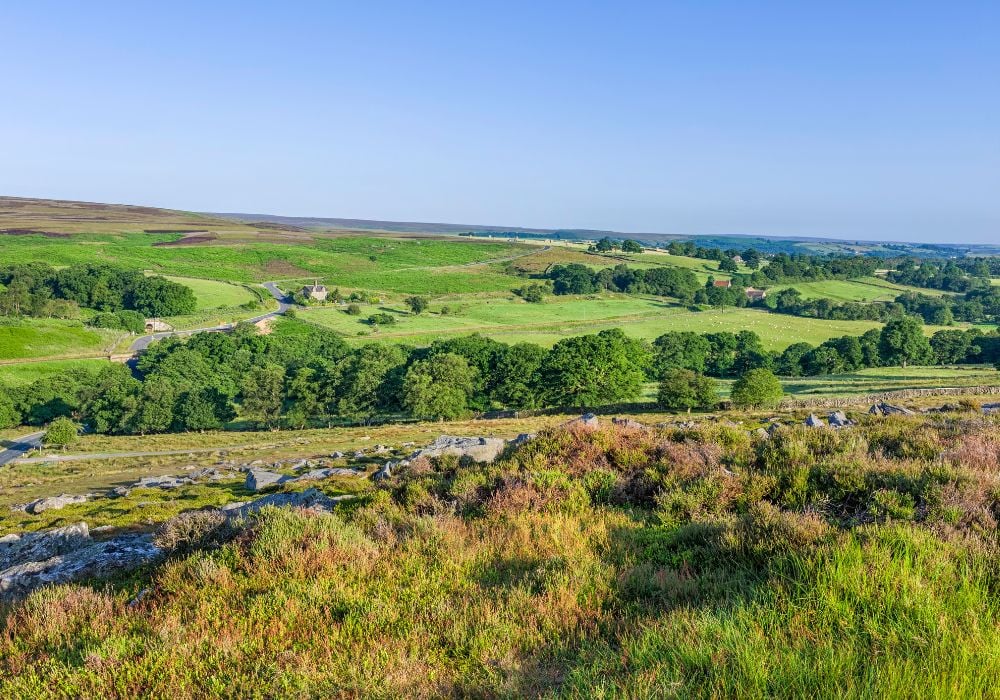
The North York Moors National Park in northern England is one of the most beautiful parts of the country. The park covers an area of 554 square miles (1,436 square kilometers) that includes brooding moorland, valleys, hills, farmland, and ancient stone villages.
I have family that live in nearby York so have spent a lot of time up on the moors and it really is one of the most picturesque places in England. It’s the perfect place for hiking at any time of year, and fall is especially nice as the leaves on the trees turn red and gold.
As well as the heather moorland, the park also covers a long stretch of coastline from Staithes in the north to the beautiful fishing town of Scarborough further south. The town of Whitby makes a great base for exploring the park.
The park is a haven for birdlife and includes some of Britain’s bird of prey species such as raptors, buzzards, kites, and sparrowhawks among others. Activities on offer in the park include walking, fell-running, and cycling. Events are held in the park throughout the year from nature walks and workshops to farmers’ markets and more.
Location: The North York Moors are located in the north of England stretching inland from the coast. Click here for directions.
Getting There: As with the other parks in England, this one is in a rural area so renting a car is the best way to explore. There are also tours from York that take in the towns and villages of the national park. Click here for more info.
Things To Do: Exploring pretty villages, hiking, and walking along the coastline.
Where to Stay: There are plenty of places to stay in and around the park. Whitby makes a good base for exploring and the Number 7 Guest House offers comfortable rooms with sea views. Click here to find out more.
3. Yorkshire Dales National Park
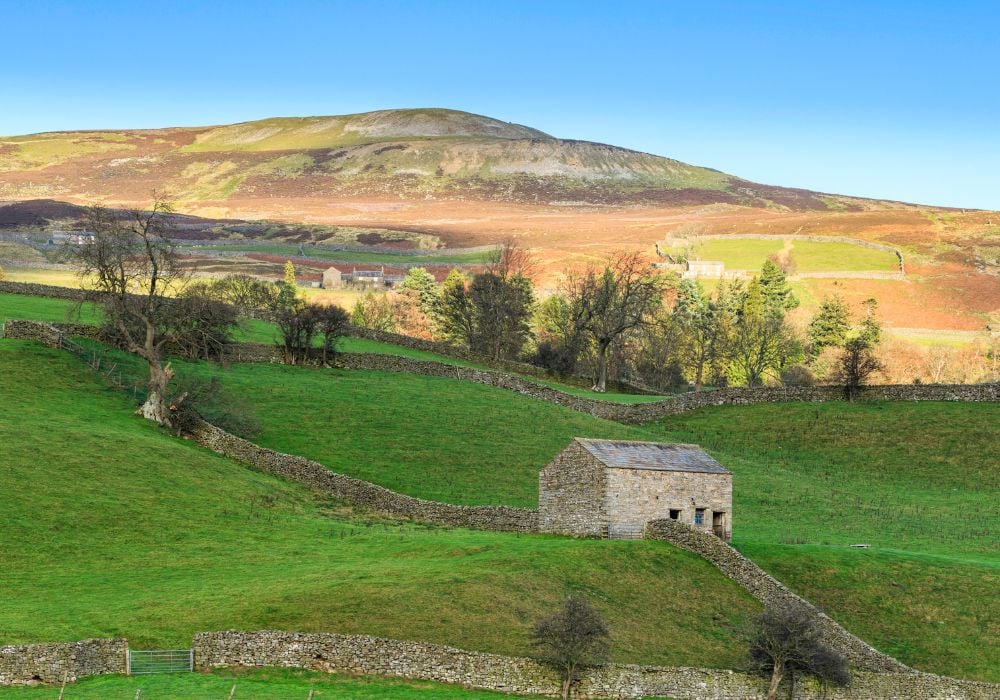
Yorkshire is lucky enough to have not one, but two national parks, and the Yorkshire Dales National Park is just as impressive as the Moors. The park covers an area of 841 square miles (2,179 square kilometers) of rolling hills and valleys punctuated by pretty villages of stone houses and old market towns.
There are lots of places of interest within the park from the stunning Aysgarth Falls, a cascading series of falls on the River Ure, to the three peaks of Pen-y-Ghent, Whernside, and Ingleborough which can be climbed individually or as part of the Yorkshire Three Peaks Challenge.
One of the highlights of the park is the Settle to Carlisle Railway which winds its way through a series of tunnels and across picturesque viaducts like the one at Ribblehead. If you don’t have your own transport there are lots of excellent day trips and tours to the Dales that you can take instead. Click here for more info.
Location: The Yorkshire Dales National Park is located in the North of England; North Yorkshire, Westmorland, and Lancashire. Click here for directions.
Getting There: Renting a car is the best way to see the Dales, as is using the scenic Settle to Carlisle Railway. Taking a tour is another great way to see the highlights of the Dales. Click here to find out more.
Things To Do: See the Aysgarth Falls, ride the steam railway, and explore towns and villages.
Where to Stay: Skipton is a charming market town on the edge of the national park and is a great base for exploring. The Pinfold is a guest house set within a gorgeous 17th Century stone building in the heart of Skipton. Click here to book.
4. Dartmoor
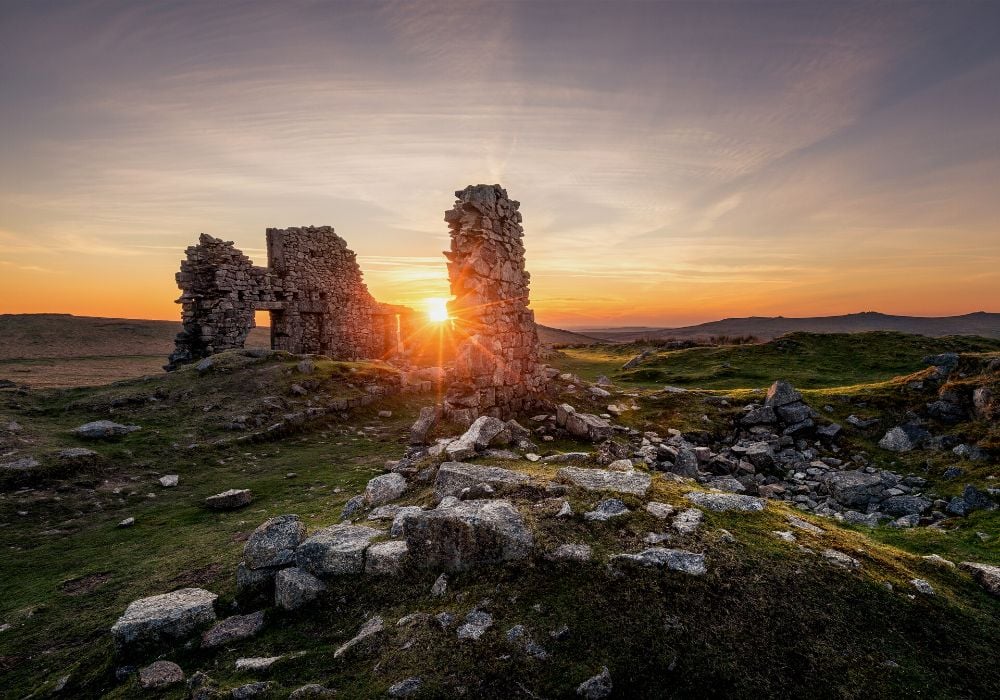
Dartmoor is my favorite of the national parks in England. It’s one of the wildest parts of the country and has an austere beauty unmatched by the other parks (at least in my opinion). I’ve been visiting Dartmoor since childhood; hiking across its beautiful hills and valleys.
Explore villages made of local stone such as the gorgeous Belstone near Oakhampton. If you’re lucky, you might spot some of the wild Dartmoor ponies which sometimes come into the villages to graze. There’s plenty to do on Dartmoor from hiking and camping to orienteering, horse riding, and other outdoor activities.
It’s perhaps no surprise that such a wild, and sometimes inhospitable place is the home of a large prison, and the Dartmoor Prison Museum is well worth checking out. Other points of interest include the stunning 11th Century Buckfast Abbey which is still home to an order of Benedictine monks.
Although Dartmoor is one of the best national parks in England in terms of scenery, it’s a very wild place, and it’s easy to get into trouble without careful planning. Be prepared when heading off hiking and ensure you have warm weather gear (even in summer the weather can turn quickly), a map, and a compass, and make sure to let someone know where you are going and when you expect to return.
Location: Dartmoor is in the west of England not far from the city of Exeter. Click here for directions.
Getting There: Renting a car is the best way to explore Dartmoor. The nearest town to the Moors is Oakhampton. This incredible 5-day tour of Devon and Cornwall includes a trip to Dartmoor. Click here for more info.
Things To Do: Hiking, exploring villages, horse riding.
Where to Stay: Belstone makes an excellent base for exploring the moors and there’s a beautiful river valley and waterfall just a short walk from the village. You can stay in the local pub, The Tors, which I’ve done many times. Click here to find out more.
5. Exmoor
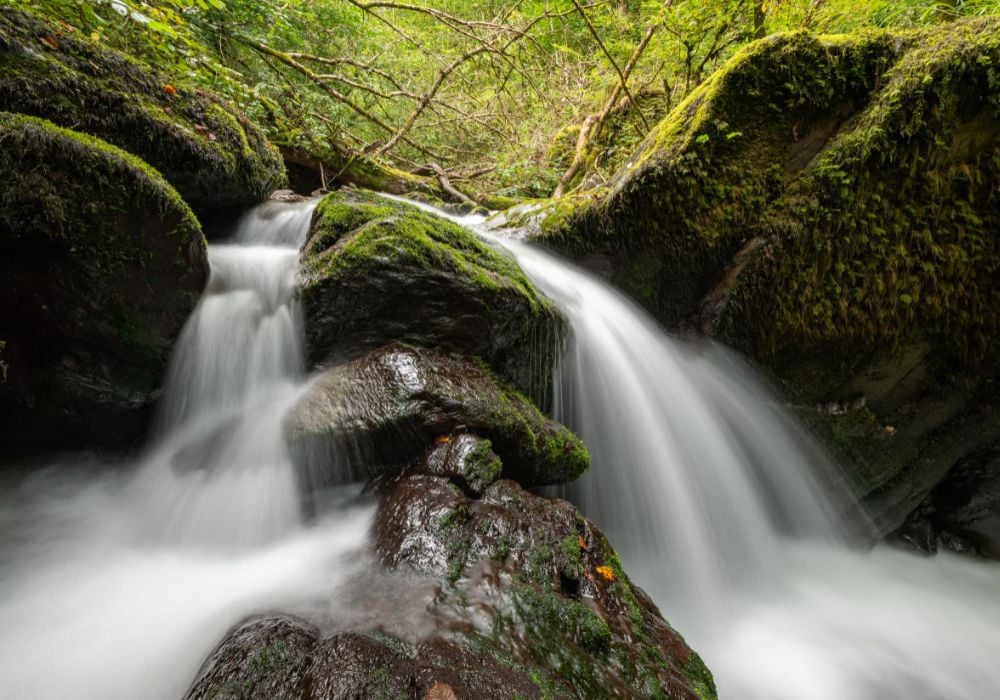
Exmoor National Park is like Dartmoor’s happier little brother. Where Dartmoor can be brooding and forlorn (though stunningly beautiful), Exmoor is bright and pleasant with rippling rivers, open pastures, and gorgeous coastal walks. The park covers an area of just 268 square miles (693 square kilometers), making it one of the smallest national parks in the country.
Although small, Exmoor is a delightful place for hiking, biking, visiting historic market towns, and visiting the rugged north Devon coastline. I’ve holidayed on Exmoor many times over the years and it’s definitely one of the best parks in England for scenery and things to do.
Some of the places of interest on Exmoor include Dunster Castle and Watermill, which date back to Anglo-Saxon times and now serve as a stately home, and the gorgeous Valley of Rocks on the South West Coast Path. There’s lots to do in the park such as hiking, swimming, and surfing.
Location: Exmoor is located in North Devon in England’s gorgeous Westcountry. Click here for directions.
Getting There: Renting a car is the best way to see Exmoor.
Things To Do: Coastal walks, horse riding, swimming.
Where to Stay: Ilfracombe on the north Devon coast makes a great base for exploring the national park. The Devonian is a charming hotel with a private garden just 100 meters from the beach. Click here to learn more.
6. New Forest National Park
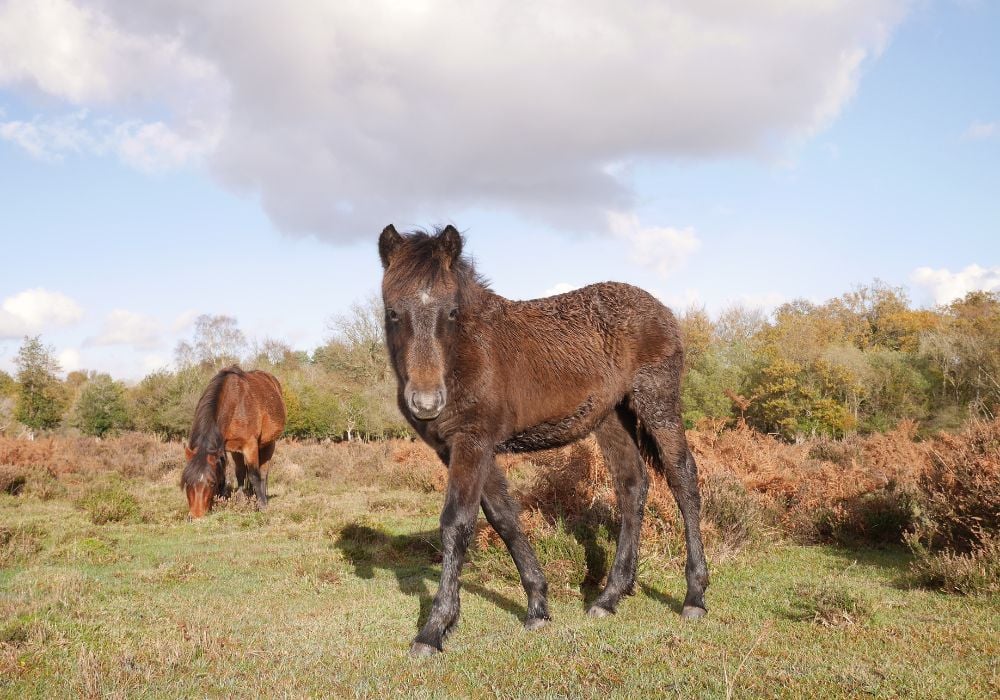
The New Forest National Park in southern England covers an area of 219 square miles (566 square kilometers) of ancient forest, heathland, farmland, and coastline. Just like Dartmoor, the New Forest is famous for its native breed of moorland pony that call the national park home.
Other species found across the park include wild deer, rare butterflies, and wading birds. The park covers an area of coastline with beautiful sandy beaches perfect for swimming and sunbathing in summer. I’ve visited the New Forest a few times and it’s a great place for a day hike and picnic.
There’s lots to see and do within the national park from visiting the National Motor Museum to riding the steam train at Exbury Gardens, hiking along the many trails, and exploring the southern coastline.
Location: The New Forest is 82 miles (132 km) southwest of London. Click here for directions.
Getting There: As with the other national parks, renting a car is the best way to get here. You can also take a train from London to Southampton and explore on foot and by local public transport. Trains depart London Waterloo hourly and the journey takes just 80 minutes.
Things To Do: Visit Exbury Gardens and the steam railway, see the motor museum, and hike along the south coast.
Where to Stay: Southampton is the closest city to the New Forest and makes a great base for exploring the park. The Regent Guest House offers modern, comfortable rooms with en-suites. Click here to book.
7. Northumberland National Park
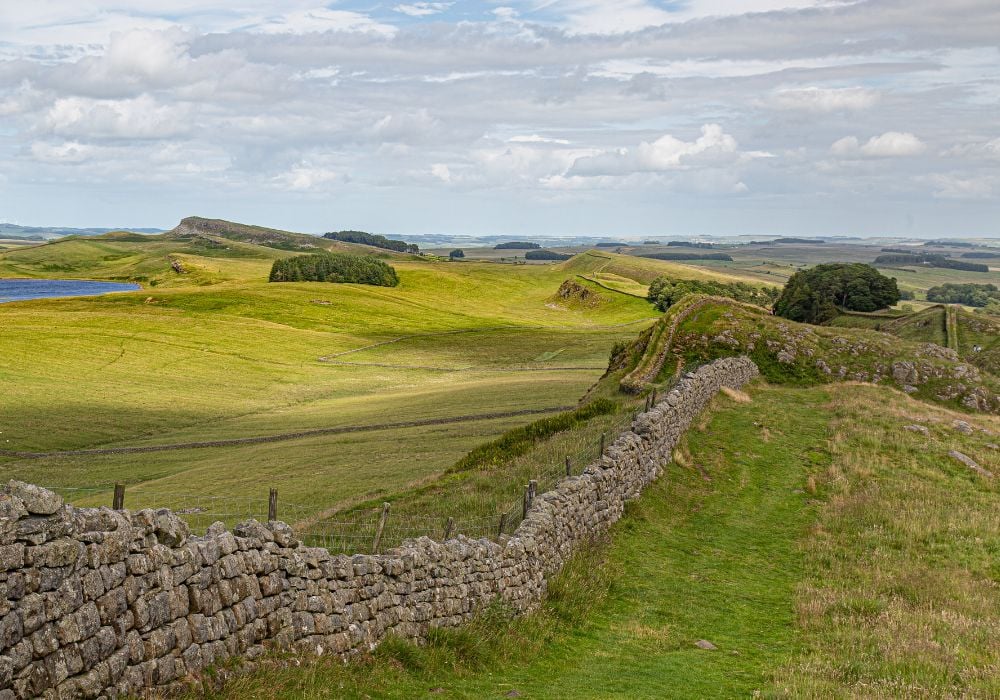
The Northumberland National Park covers an area of 405 square miles (1,049 square kilometers) in northern England close to the Scottish Borders. It’s the northmost national park in England, and also the least populated. This is the best national park for hiking in England thanks to its wild and rugged landscape.
The park is home to the iconic Hadrian’s Wall, a defensive wall built by the Romans under Emperor Hadrian in 122AD to keep the Picts (an ancient tribe from Scotland) out of Britania. This is one of the top sights in the region and a must-visit for history fans like myself.
Other places of interest include stunning Coquetdale where the Coquet River meanders through moorland, and The Cheviots, a range of hills straddling the border of England and Scotland creating one of the most scenic places in the park. The Sill is an exhibition center, museum, and cafe that makes a good starting point for exploring the park.
Location: Northumberland National Park is in the far north of England on the border with Scotland. Click here for directions.
Getting There: This is a very wild and sparsely populated area, so again, renting a car is best.
Things To Do: Walk along Hadrian’s Wall, visit the Sill exhibition center, and hike the Cheviots.
Where to Stay: Rothbury on the edge of the park makes a great base. The Haven is a charming guest house with easy access to the national park. Click here to learn more.
8. The South Downs National Park
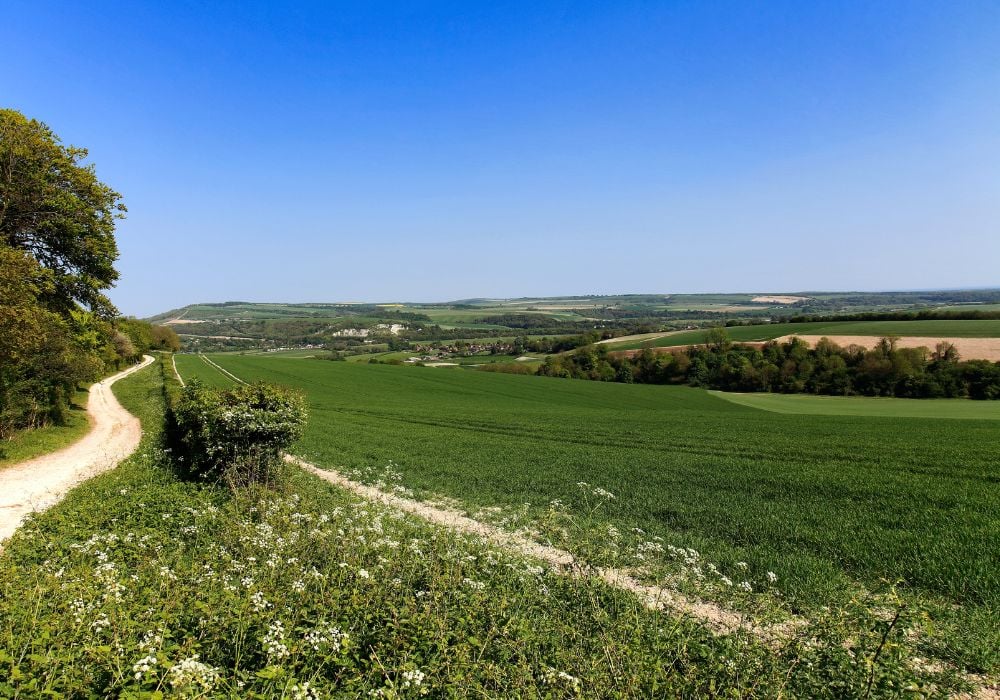
The rolling hills of the South Downs National Park cover an area of 628 square miles (1,627 square kilometers) across Hampshire, West Sussex, and East Sussex. It’s the closest national park to London and can be reached from the city in under an hour. I’ve spent a lot of time hiking and exploring castles in this park.
The area is perfect for walking as there are lots of easy trails and the panoramic views down to the south coast are truly magnificent. The charming town of Lewes is located within the park and is well worth a visit for its picturesque high street and plentiful pubs and boutique shops.
One of the most impressive parts of the park is the Seven Sisters Country Park which is home to steep white, half cliffs towering above the south coast. You can walk along the clifftop (don’t go too near the edge!) or along the bottom and spend time on the gorgeous Sussex beaches.
Location: The South Downs cover a large area of southern England from Eastbourne to Winchester. Click here for directions.
Getting There: Unlike many of the more rural national parks, it’s relatively easy to get to the South Downs with public transport. There are hourly trains from London to Lewes, Eastbourne, Brighton, and many other places within the park, from where you can explore on foot.
Things To Do: Visit Lewes, see the Seven Sisters, and take in the panoramic views of the south coast.
Where to Stay: The gorgeous town of Lewes makes a great base for exploring the South Downs. Meadow View is a two-bedroom studio flat with a terrace and views of the Downs. Click here to find out more.
9. The Norfolk Broads National Park
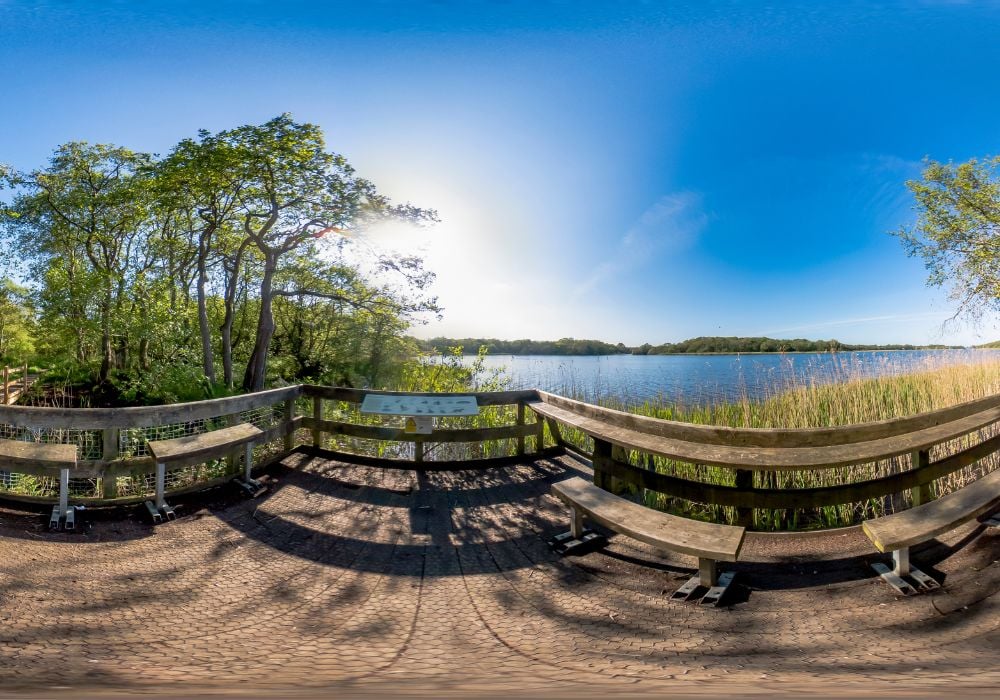
The Norfolk Broads National Park is the most unique of all the parks in England. It covers an area of just 117 square miles (303 square kilometers) making it the smallest of England’s national parks. It’s also the only national park that’s manmade, as the broads (a series of interconnecting waterways) are a byproduct of peat digging from the 12th to the 14th Century.
The Norfolk Broads are made up of 7 rivers and 63 individual broads and it’s one of the most popular places in the country for boating (Lord Nelson allegedly learned to sail here). It’s also Britain’s largest protected wetland and habitat for a huge number of birds and other wildlife species.
I’ve been out boating on the Broads many times and it’s great fun. You can rent a boat for the day, or take out a larger vessel with a sleeping area and set off on a multi-day trip across these pleasant East-Anglian waterways. Prices start from around £600 for seven nights on a boat that sleeps two people. Click here to learn more.
Location: The Norfolk Broads are located in the East Anglian county of Norfolk, just a couple miles from the city of Norwich. Click here for directions.
Getting There: The Broads are easily reachable from Norwich, which is a 3-hour train trip from London.
Things To Do: Go boating, see the East Anglian sunsets, and explore Norwich.
Where to Stay: As Norwich is just 4 miles from the Norfolk Broads this makes a great base. However, the best way to experience the Broads is to take a boat out and sleep on the water.
10. Lake District National Park
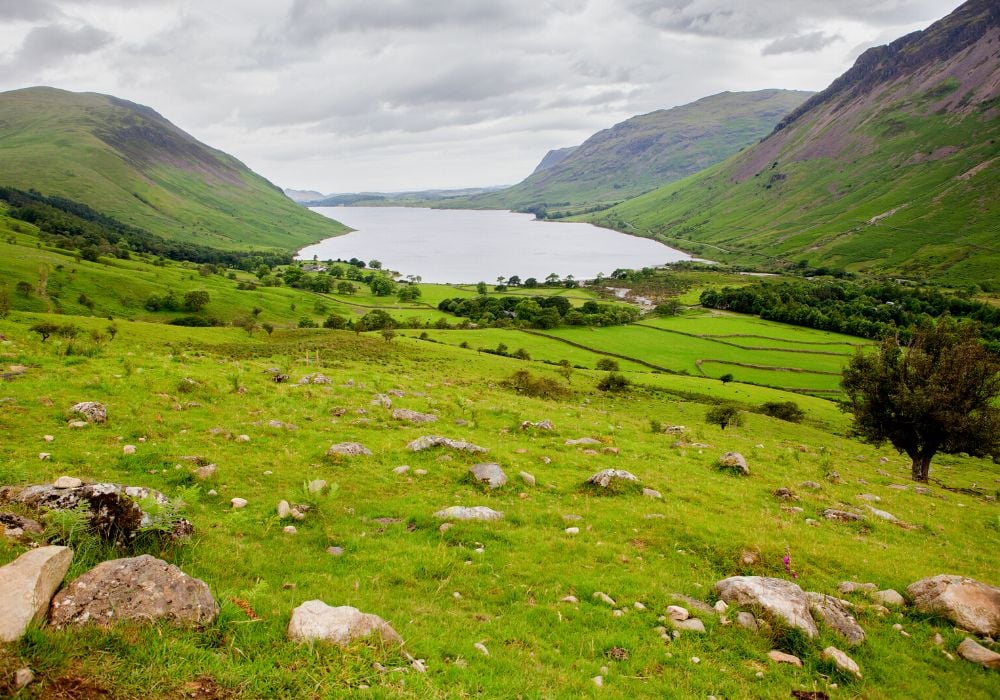
The Lake District National Park is 912 square miles (2,362 square kilometers) making it the largest national park in England. It’s also one of the most beautiful with stunning Lake Windermere at its center. There’s lots to do from boating on the lake to lakeside walks, and some excellent hiking in the nearby mountains.
The park is home to England’s highest mountain, Scafell Pike at 3,208 feet (978 meters), which is a popular route for hikers as it offers magnificent views of the national park. It takes around two hours to reach the summit and another two to get back down again.
The park is also home to some gorgeous English villages and market towns with stone cottages, rustic pubs, and boutique shops selling local produce and handicrafts. Keswick and Kendall are two of the most popular places and offer easy access to the lake and surrounding hikes.
Location: The Lake District is in the north of England and adjoins the Yorkshire Dales National Park. Click here for directions.
Getting There: As with most of the northern national parks, and because of its rural location, renting a car is the best way to see the Lake District.
Things To Do: Go boating on Lake Windemere, climb Scafell Pike, and explore the towns and villages of the park.
Where to Stay: There are lots of accommodation options around Lake Windemere. Meadowcroft Country Guest House offers comfortable rooms with mountain views just two miles from the lake. Click here to find out more.
Getting Around England
By far the best way to get around when visiting the English national parks is to have your own vehicle. As the parks are rurally located, public transport is almost non-existent in some places. Rent a car when you get to England and this will allow you to explore these incredible places at your own pace.
Some of the national parks are easier to visit with Public transport such as the Norfolk Broads, the South Downs, and the New Forest. For the Broads, you can take a train from London to Norwich which takes around three hours. For the South Downs, take the train to Eastbourne or Lewes (under one hour from London), and for the New Forest go to Southampton.
Quick Itineraries for Visiting the Top Parks in England
Here are a few simple itineraries to follow when visiting the national parks:
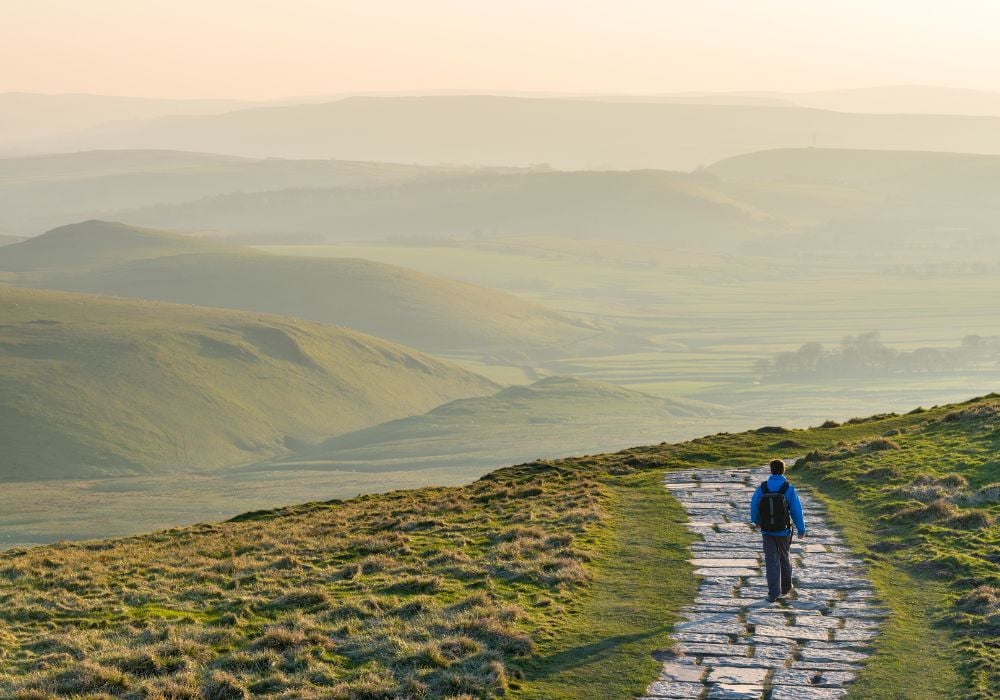
3 Days in England
With just three days in England, it’s best to pick just one national park and concentrate on exploring that area. You can, in theory, visit multiple parks in this time, but it will mean you’ll spend most of your time traveling and have very little time to enjoy the beauty of these national treasures at leisure.
Choose a national park based on where you’ll be flying into or staying. The closest national parks to London are the South Downs and New Forest, the closest to Bristol is Exmoor, the closest to Manchester is the Peak District and the closest to Leeds are the Yorkshire Dales and North York Moors.
One Week in England
With a week to spend visiting the national parks in England, choose one or two parks to spend time exploring. Dartmoor and Exmoor can both be explored within a week as it’s only an hour’s drive along the A38 between the two. This will give you time to experience the beauty of Dartmoor before heading to the stunning north coast of Devon.
If you’d rather spend your time in the north of England, you can combine the North York Moor and Yorkshire Dales, or the Dales and the Lake District (this is one of the most scenic in the country and is home to the beautiful Lake Windermere). You can choose a base between parks and visit as day trips, or spend time in one before moving on to the next.
10+ Days in England
With 10 days to explore, you can experience three to four of England’s national parks, but you’ll need your own transport to do so. If starting in London, you can make your way to Dartmoor via the New Forest. You can then visit Exmoor before heading north and stopping at the Peak District.
Alternatively, you can start in the north and visit Northumberland before moving south to the Lake District and both of Yorkshire’s national parks. You could also base yourself somewhere like Leeds which would give you the opportunity to explore the Peak District, both Yorkshire parks, and the Lake District.
National Parks in England: FAQs
Here are some answers to commonly asked questions about visiting the parks and reserves in England:
There are 10 national parks in England and 15 in the whole of the UK including Scotland and Wales. The parks are spread across the country and include inland and coastal parks, mountains, lakes, and rivers.
The best national park in England will largely depend on what you’re looking for. Personally, I think Dartmoor is the best national park in England for its austere beauty and wildness. The South Downs, Lake District, and Peak District are three of the most visited national parks in England so are also considered the best by many.
All the national parks in England are free to enter (though parking charges may apply). Many of the parks also have excellent visitor centers with a wealth of information on how to visit which are also free to enter.
The Lake District is the largest national park in England as it covers an area of 912 square miles (2,362 square kilometers). By comparison, the Norfolk Broads National Park is the smallest with an area of just 117 square miles (303 square kilometers).
All of the national parks in England are stunningly beautiful and each has its own unique selling points, so it would be impossible to choose just one park. However, on a personal level, I would say Dartmoor is the most beautiful, followed closely by Northumberland.
Wild camping in the national parks is not allowed (you’ll need to go to Scotland for this), however many of the parks have designated campsites and facilities where you can camp. Visit the website of the particular park for more details.
In Conclusion
Now you know about the best national parks in England, which one would you like to visit first? From the wild and windswept Dartmoor and Northumberland to the picturesque New Forest and Exmoor, Yorkshire’s two national parks, and more, there’s no excuse not to visit one of these gorgeous places.
I love exploring these beautiful, and still relatively untouched parts of the country as there’s so much opportunity for outdoor adventure. From hiking and biking to swimming, caving, and rock/mountain climbing, there’s something to keep everyone entertained.
Like This Article? Pin it!
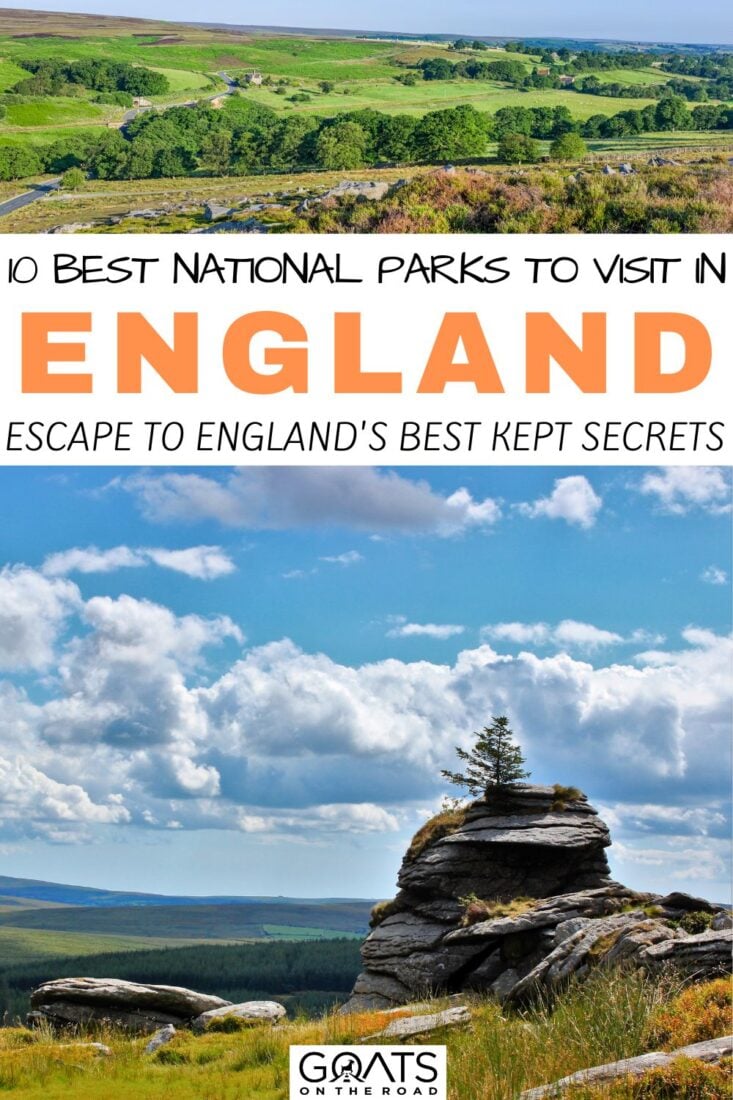
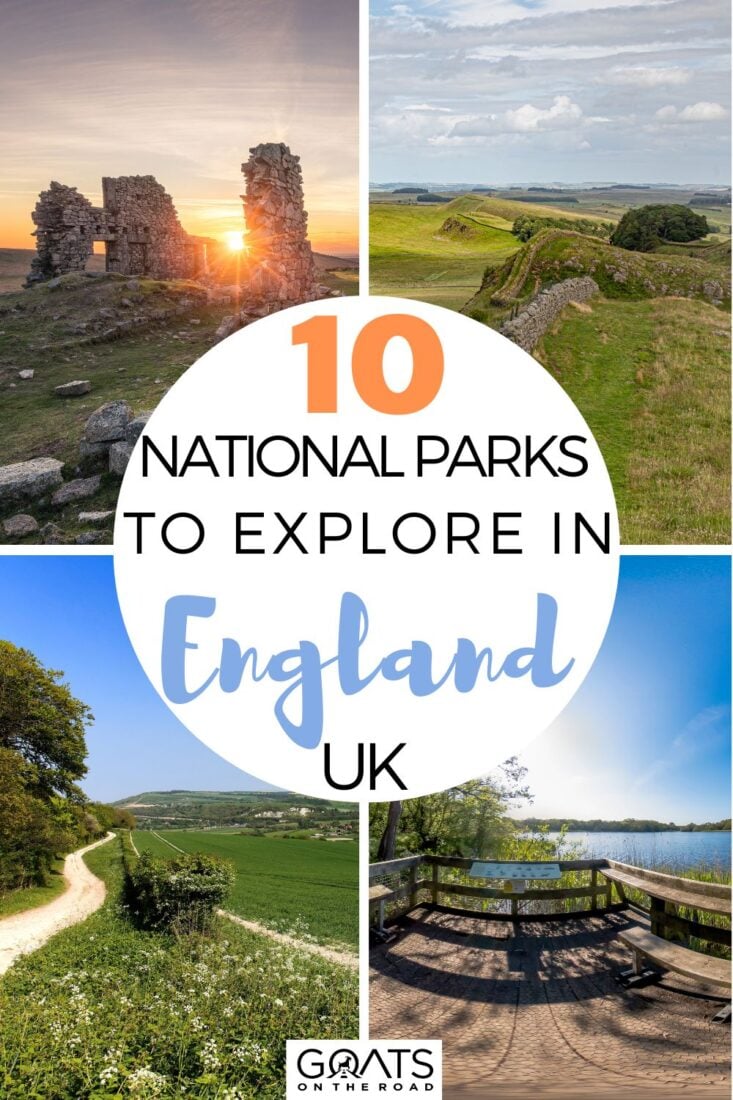
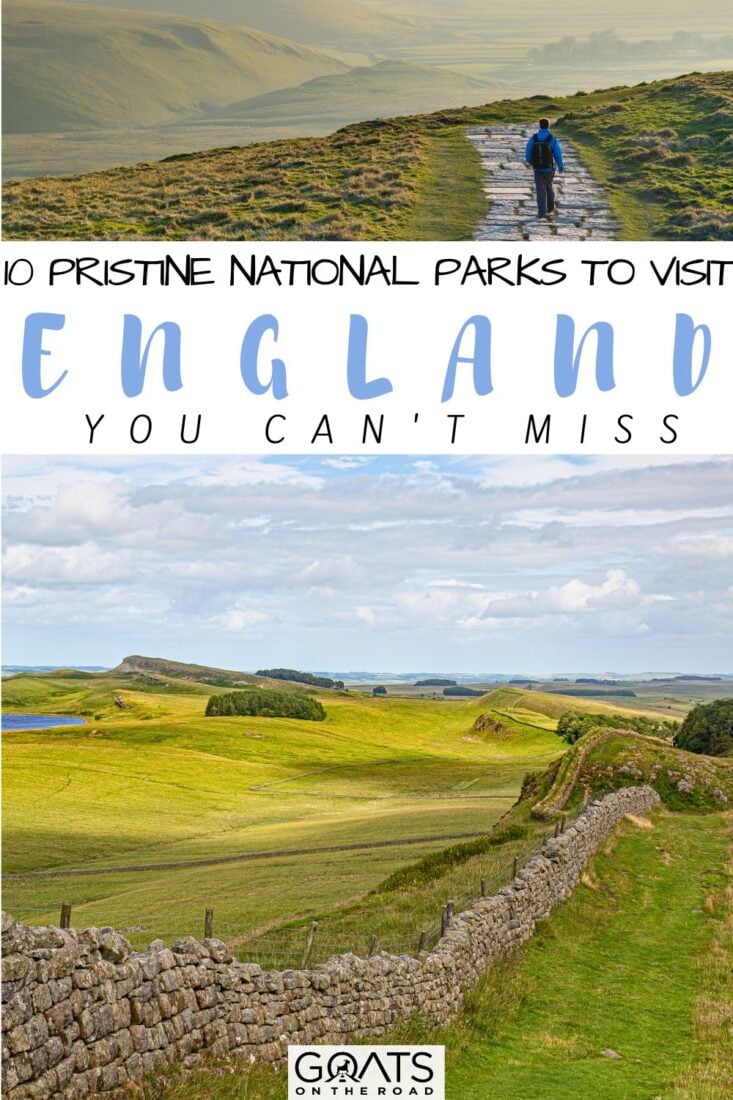
The post 10 Pristine National Parks to Visit in England in 2023 appeared first on Goats On The Road.






Recent Comments